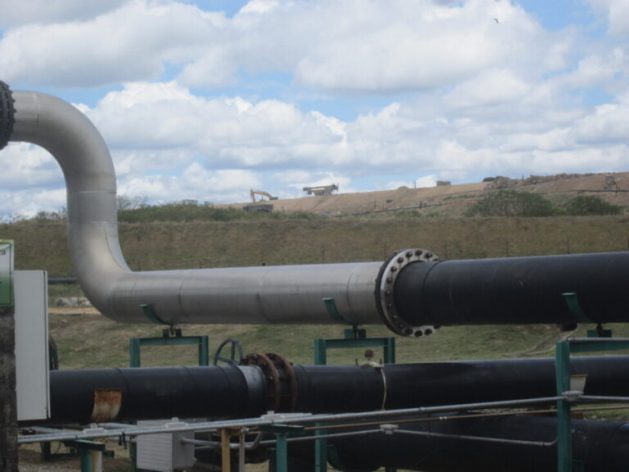Biomethane from Garbage: Turning a Climate Enemy into Clean Energy - VIDEO

FORTALEZA, Brazil, Oct 07 (IPS) - Garbage that has accumulated since 1991 in the two landfills in the municipality of Caucaia has become a biomethane deposit that supplies industrial and commercial companies, thermoelectric plants and homes in Ceará, a state in northeastern Brazil.
The GNR Fortaleza plant extracts biogas from 700 wells installed in the landfills and refines it to obtain what it calls renewable natural gas - which gives the company its name - as opposed to fossil natural gas.
The plant, with a total area of 73 hectares, is located between two open-air landfills that resemble small plateaus in Caucaia, a municipality about 15 kilometers from the state capital Fortaleza, whose outskirts it forms part of, and produces about 100,000 cubic meters of biogas per day.
In addition to the climate benefit of reducing emissions of greenhouse gases, biomethane today costs 30 percent less than its fossil equivalent, said Thales Motta, director of GNR Fortaleza as representative of Ecometano, a Rio de Janeiro-based company specializing in the use of biomass gases.
"It is a good business" because its price is adjusted according to national inflation and is not subject to exchange rate fluctuations and international hydrocarbon prices, as is the case with fossil gas, he told IPS.
Ecometano partnered with Marquise Ambiental, a company that manages landfills locally and in other parts of Brazil, to create the GNR in Caucaia.
Another decisive collaboration came from the state-owned Ceará Gas Company (Cegás), which agreed to incorporate biomethane into its natural gas distribution network, right from the start, in 2018, when the new fuel cost 30 percent more than fossil natural gas and faced misgivings about its quality and stability of supply, Motta said.
The agreement allows for the direct injection of biomethane into the Cegás grid and a share of around 15 percent of the consumption of the distributor's 24,000 customers.
Industry is the main consumer, accounting for 46.26 percent of the total, followed by thermal power plants and motor vehicles. Residential consumption amounts to just 0.73 percent. Cegás prioritizes large consumers.
Ecometano is a pioneer in the production of biomethane from waste. It started in 2014 with a smaller plant, with a capacity for 14,000 cubic meters per day, GNR Dos Arcos, located in São Pedro da Aldeia, a coastal city of 108,000 people 140 kilometers from Rio de Janeiro.
In Caucaia, a municipality of 370,000 people near the coast of Ceará, the new landfill, in operation since 2019, receives 5,000 tons of garbage daily from Greater Fortaleza and its 4.2 million inhabitants.
The old landfill, which opened in 1991 and is now closed, is still the main source of biogas. But production is in continuous decline, unlike the new one, which is growing with the daily influx of garbage brought in by hundreds of trucks.
GNR Fortaleza's experience has encouraged the dissemination of similar plants in metropolitan regions and large cities, due to the profitability of the business and because reducing methane emissions is key to mitigating the climate crisis.
Methane is at least 20 times more potent than carbon dioxide, the gas with the highest emissions, in terms of global warming. The 26th Conference of the Parties (COP26) on climate change, held in Glasgow, Scotland in November 2021, set a goal of cutting methane emissions by 30 percent by 2030.
© Inter Press Service (2022) — All Rights Reserved. Original source: Inter Press Service
 Global Issues
Global Issues